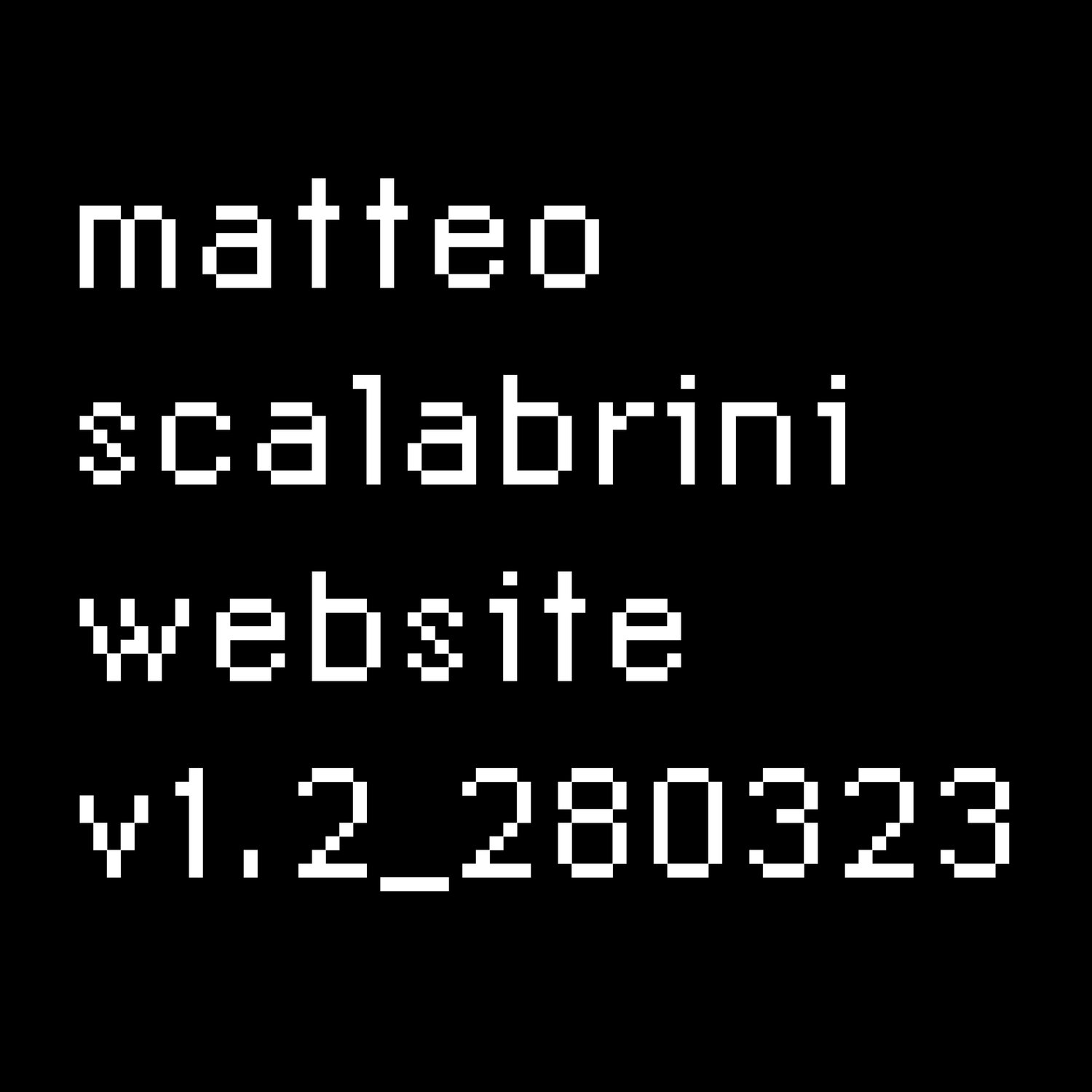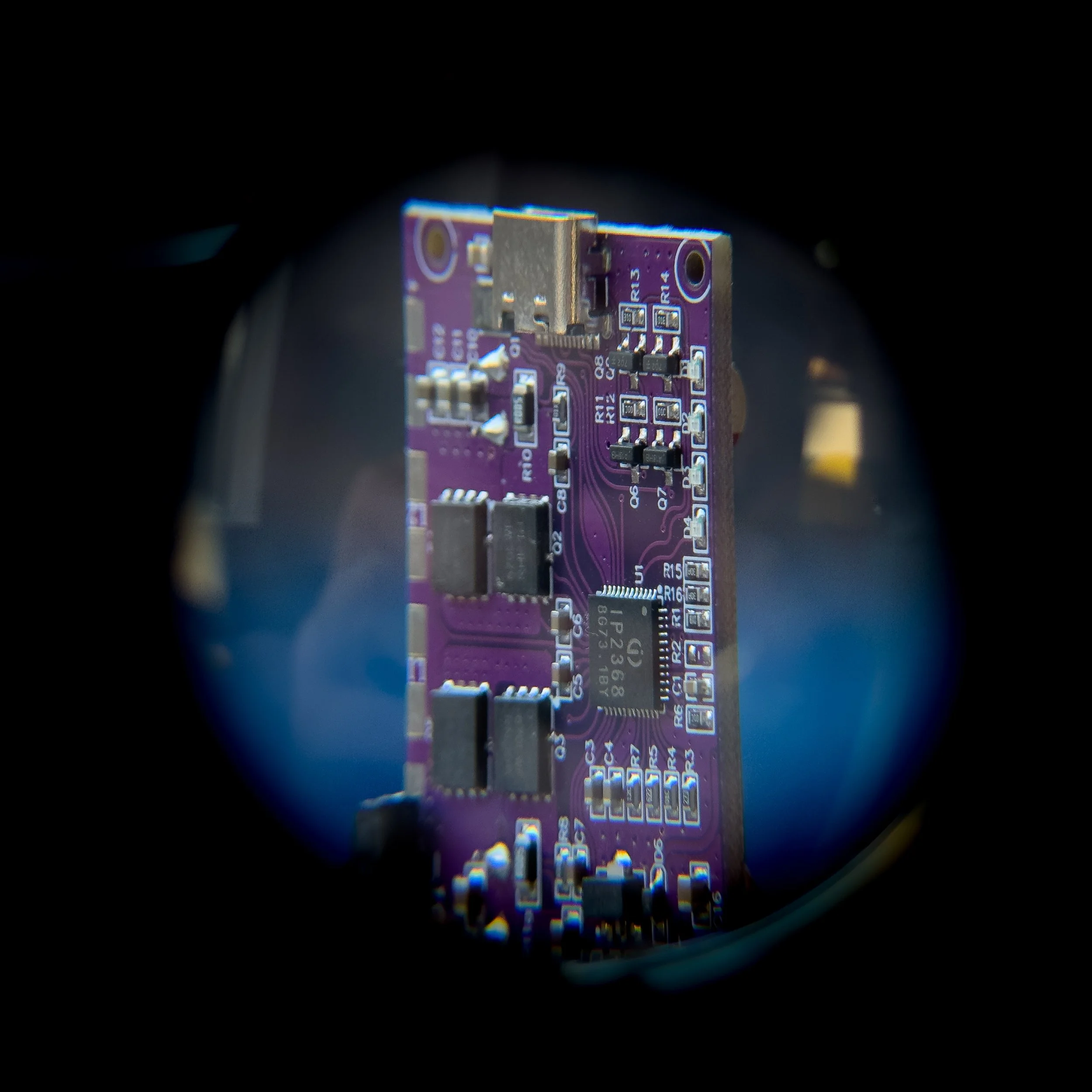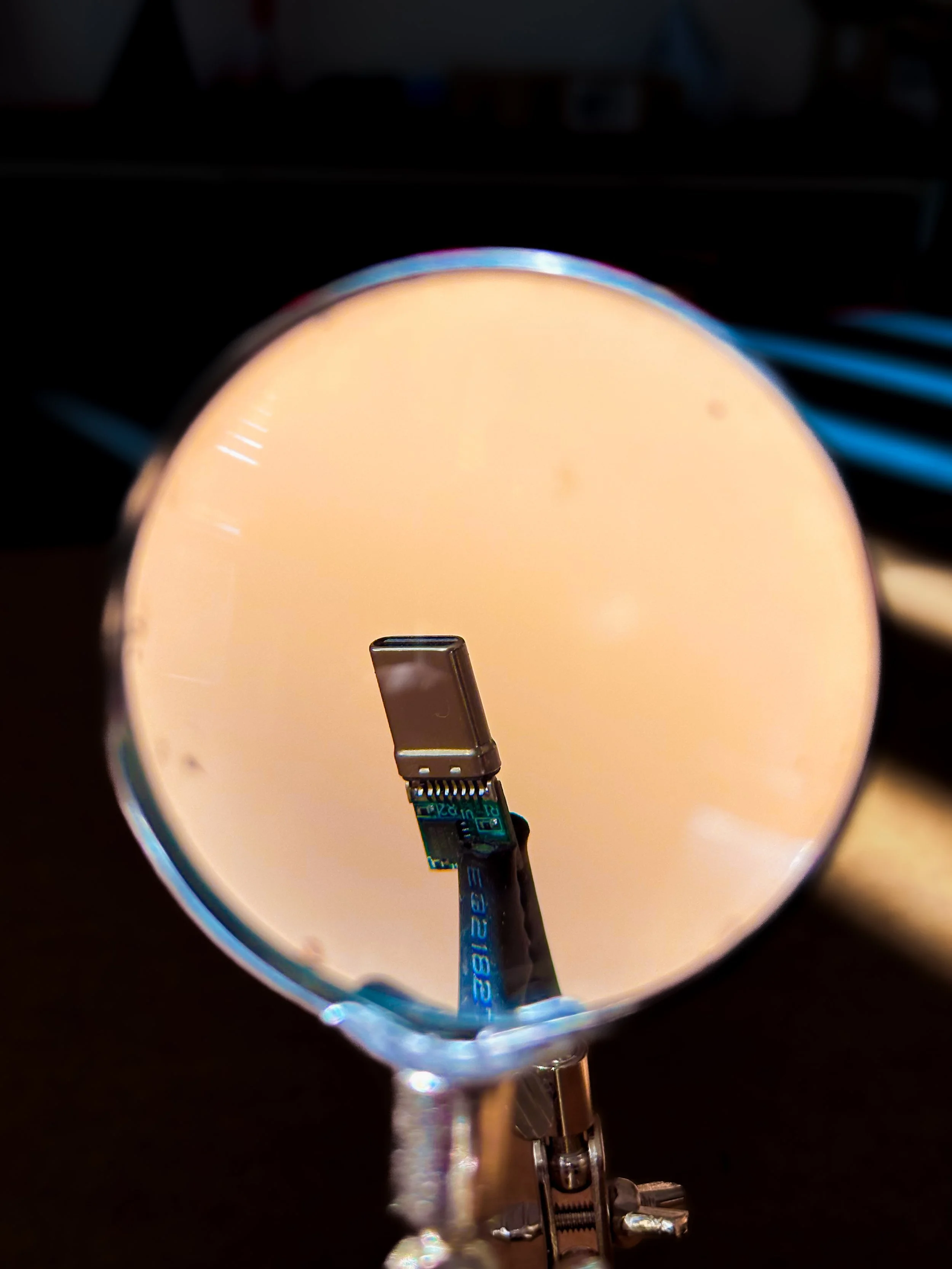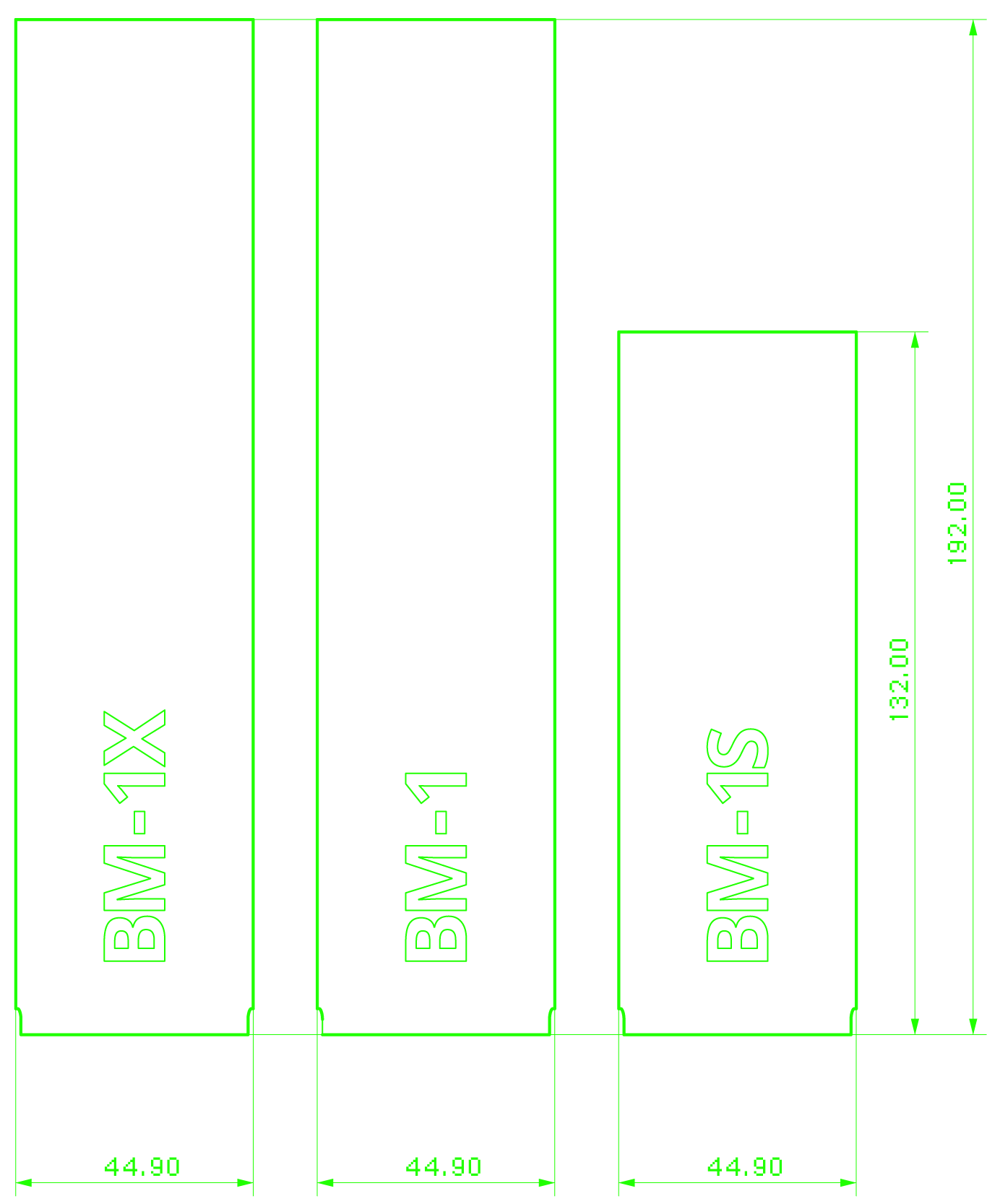The reseach conducted in Lithium highlighted that a change in lithium extraction, even though possible, was not feasible in the short period. The best and most effective solution is to change the way we implement power in our products.
BM1 Power-Delivery (100W) mainboard powered by IP2368 IC
The battery module system is my vision of change. It is a system where portable power is standardized and common to all products: from portable tools, to household appliances and power-hungry applications. A single fast swappable, repairable, battery pack for a multitude of devices.
This was possible thanks to the power delivery protocol. USB PD (Power Delivery) is a specification or industry standard for managing high power […]. It provides more flexible data transfer and power delivery by enabling maximum USB functionality over a single cable. (Satechi.net, 2021) The power delivery protocol enables the use of a single standard charger / connector for all our electronic devices, reducing the need for multiple and often proprietary power adapters.
The battery modules / From left to right: BM1S 100W 22Whr compact module - BM1 100W 60Whr long range module - BM1X 200W 45Whr highpower module.
Project’s DNA
-
Right to repairIn a market that designs closed objects and provides little to no replacement parts, the possibility to open up our electronic devices and easily swap damaged is fundamental. To accomplish this, planning while making the first steps in development is vital. We must allow users to dismantle their devices and re-use parts in future projects repurposing lithium cells, PCBs, wires and connectors or simply just for encouraging the recycling and sorting of the materials for the correct disposal path.
-
It is fundamental to repair a product. However, it is even more important not to need any repair thanks to the product design itself. In fact, it is vital to combine good design choices with good electronics choices. The engineering process and the design process must work seamlessly together to create an outcome that is both safe and extremely reliable to use.
-
When designing open hardware or software, the designer intends to distribute its work with a free licence, encouraging possible modifications and further distribution. There are many open-source licences, but the one I have been using the most, both for software and 3D printing projects, is Share-Alike. This licence enables the original work to be remixed and republished but only under the same original licence. The goal is to keep the project open even if a company could want to implement and modify it to satisfy its needs. Furthermore, this ensures that all future developments are public and accessible to everyone. Since I strongly believe in collaboration, I think the only way to keep it alive is to be sure that the project remains open. What does it mean, practically, to have access to an open-source project? Thanks to technological advancements, more efficient components will be soon available on the market. The users must access the source files to adapt their old devices to the newer components, even if the project is not supported anymore by its founders. Furthermore, the aims of this project are multiple. I want to provide a system for makers and DIY users while proving this can be implemented on a large scale industrial market. I believe a producer would be tempted by an open-source modular battery project that provides proof of operation and is free for adoption.
-
Powered by new and more complex means of production, it revolutionized the way we produce at home. Through sharing on online platforms, innovation has been made faster and products more advanced, creating immense libraries of free projects that strongly compete and pose a threat to closed-source traditionally manufactured ones.D.I.Y. links everything together and is implicit in every step I took while developing this project. To look at things with a D.I.Y. perspective means to create easy to assemble (and disassemble) objects. These products need to be easy to repair, made with readily available materials and whose plans are open for everyone to use. To design with Do it Yourself in mind means democratize design and make it accessible to everyone independently of their economic situation. It means to create products that, since their birth, are thought to be user friendly because they can be assembled by users in everyday’s contexts.
The BM-Ecosystem
More freedom, less engineering constraits: the BM-Ecosystem consists of a series of products designed to be powered by BM modules.
Electronic Minimalism
Inside every BM compatible product the only component needed to deliver power is the decoy PCB which through the Power-Delivery protocol comunicates with the batteries and sends a request matching applicance’s voltage requirements. Compared to a traditional battery powered product there is no need to have in-object battery protection, voltage regulation or transformers.
A common ground
The shape of the battery packs is dictated by the disposition of the internal components.
The mechanical importance of this form relies on the fact that is linking ground between the battery packs and the object. The basic shape comes from an offset of the internal cells footprint and a the connection between the vertical quadrants.Thjs creates enough room to protect the cells while leaving space for the Battery Management System and Power Delivery PCBs.
The battery modules can vary in height, but will keep the same footprint. This creates a common ground of compatability between all the appliances and enables scaling the battery capacity with height.
The Collection
The BM-Speaker
The BM-Speaker is a 50w portable Bluetooth speaker that is powered and designed to work with the battery modules.
The speaker features minimal electronic components, and enables when connected to a mains plug, to recharge the modules themselves. The device acts both as a powered device, and as a dock.
The BM-Torch
The BM-Torch is a small torch that plugs on top of the battery modules and poweres through the type-c connector.
The modules features a 3W high-power Nichia LED, a custom made aluminium heatsink and small led driver ic.
BM-BOARD
70 km/h Max Speed
30 km Range
0 to 50 in 3.5 seconds
~5Kw Max Power Output
The BM-BOARD is the bet I took when I began developing this system. In order to show the full capabilities of the battery modules I committed in finding an application which could, in a single glance, show that the project is not just a gimmic. An application without compromises that takes my idea to the extreme.
The BM-BOARD is an electric longboard powered by the BM-MODULES. With dual 6354 BLDC motors, a 200A ESC, 18:36 gearing and a peak output power of nearly 5 KiloWatts delivers a true breathtaking experience with the convenience and perks of the quick-swappable battery modules.
The board is fully customizable via the VESC app whic enables to limit the output power to comply to the current electric-transportation legislations and extend the range. On the fully unlocked track-mode, thanks to the dual motor configuration and a reduced weight of only 9kg, enables a breath taking 0-50 acceleration of only 3.5 seconds and a maximum speed of 70km/h.








